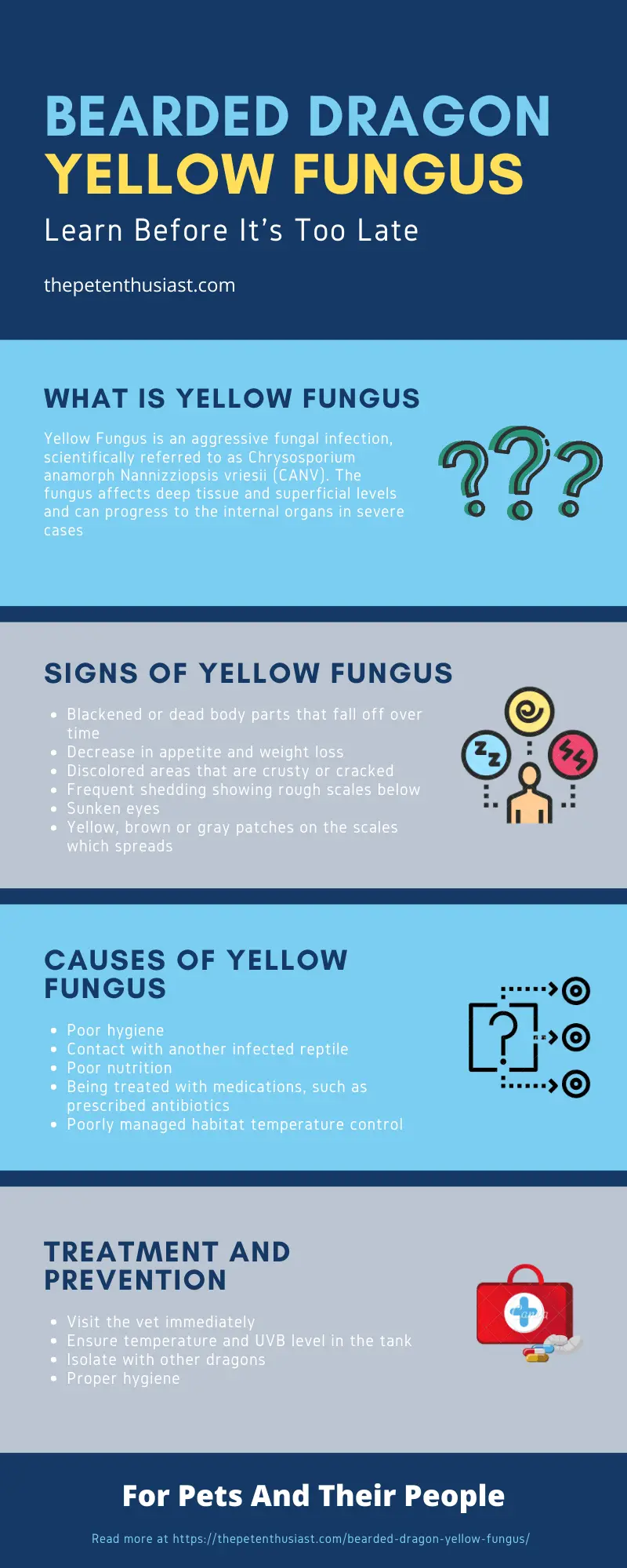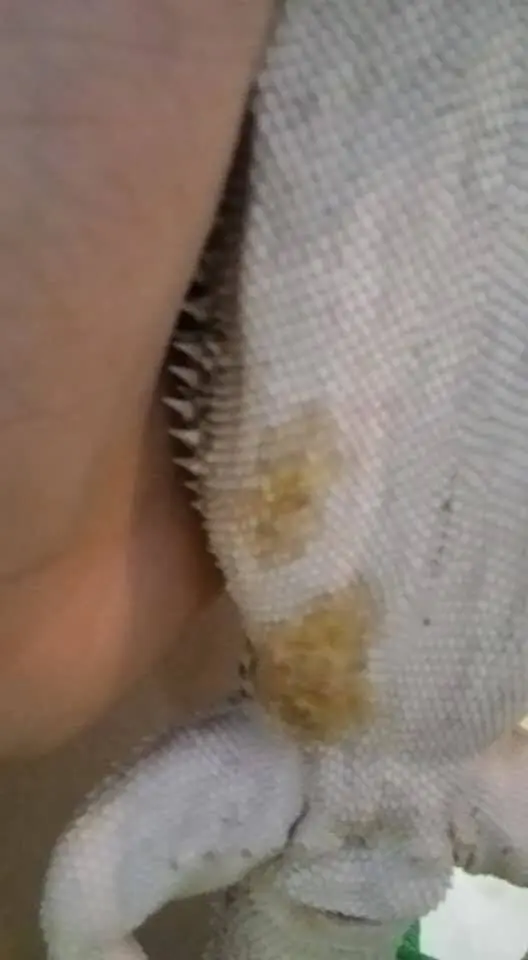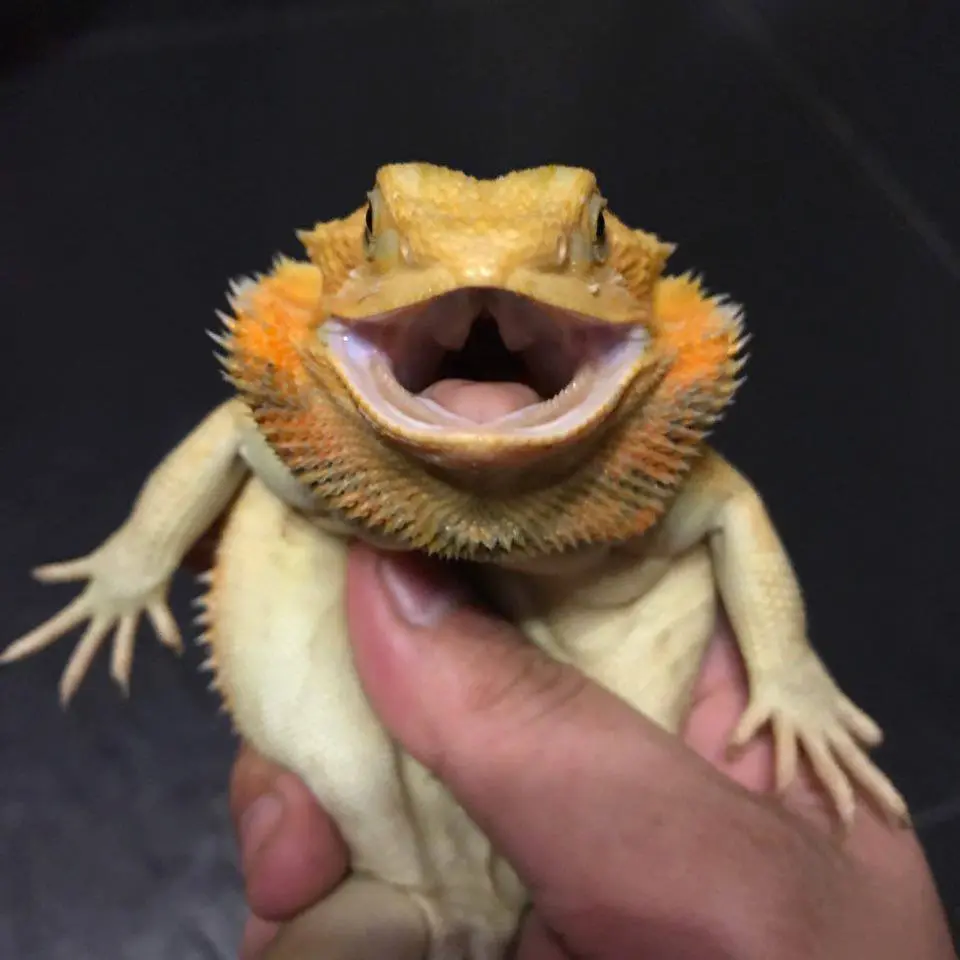Owning a bearded dragon comes with a lot of responsibility. You must ensure your reptile is well taken care of, meeting their unique habitat requirements and health needs.
Having a good understanding about the different illnesses that dragons experience is a great way to keep your finger on the pulse, helping you identify when your dragon needs veterinary attention.
Yellow fungus is one of the most common illnesses in bearded dragons. You need a good understanding of the disease, along with treatment and prevention knowledge to ensure you provide your bearded dragon with the best care in the long run.
Further Reading:

What Is Bearded Dragon Yellow Fungus
Yellow Fungus is an aggressive fungal infection, scientifically referred to as Chrysosporium anamorph Nannizziopsis vriesii (CANV). The fungus affects deep tissue and superficial levels and can progress to the internal organs in severe cases.
Bearded dragons with yellow fungus will have discolored scales and the scales may even break off to show the ulcerated tissues below. The tissues that are revealed can be inflamed and painful to the touch.
Signs Of Yellow Fungus In Bearded Dragons

There are numerous signs and symptoms that your dragon may be suffering from yellow fungus, these include:
- Blackened or dead body parts that fall off over time
- Decrease in appetite
- Discolored areas that are crusty or cracked
- Frequent shedding showing rough scales below
- Slow healing of wounds
- Sunken eyes
- Ulcerated wounds
- Weight loss
- Yellow, brown or gray patches on the scales which spreads.
Early Stage Signs And Symptoms
A newly infected bearded dragon may show some slight signs of yellow fungus, which may include a dry or crusted lesion on one or more scales. This may or may not be seen along with discoloration.
The trouble areas can be retained during the shedding process. It’s not uncommon for shedding to happen more often in dragons suffering from yellow fungus.
Later Stage Signs And Symptoms
Advanced stages of yellow fungus in bearded dragons can result in the affected areas turning black and starting to rot.
If the fungus has moved to the limbs or tail, these could fall off if treatment is not sought. In addition to this, in advanced stages wounds can start seeing a puss-like substance.
Causes Of Yellow Fungus In Bearded Dragons
There are numerous reasons why your bearded dragon may have yellow fungus. The most common causes are a result of:
- Poor hygiene
- Contact with another infected reptile
- Poor nutrition
- Being treated with medications, such as prescribed antibiotics
- Poorly managed habitat temperature control
Poor Habitat Conditions
Bearded dragons require a very particular habitat, which makes them feel at home. Bear in mind that your bearded dragon would have originally come from the hot deserts of Australia and requires hot temperatures.
Temperatures that are too low in the enclosure to improper UVB exposure can all result in yellow fungus, due to the dragon’s immune system being weak and suppressed. Poor hygiene can have a significant role in the risk of yellow fungus developing in your beardie.
Correct temperatures, adequate UVB along with a clean enclosure can help to reduce the risk of your dragon getting yellow fungus moving forward.
Pathogen Exposure
The yellow fungus pathogen can be very dangerous to bearded dragons and if your dragon has come into contact with this pathogen, then they can become easily infected.
The most common way your dragon can become infected with the yellow fungus pathogen is by being around other infected dragons, being handled by someone who has handled an infected dragon or using enclosure accessories that were previously used by an infected dragon.
For this reason, you must always remember to wash your hands thoroughly when handling your bearded dragon or any dragon.
Yellow Fungus Treatment
If you have any reason to suspect that your dragon has yellow fungus, you will want to make an appointment with your vet immediately.
A number of tests will be carried out to rule out other causes. These tests may include a skin scrape test, PCR test and blood work. In some cases, a skin biopsy is done.

Once yellow fungus has been confirmed your dragon will be put on an aggressive treatment plan to extend their life.
Oral anti-fungal medication with daily soakings in a medical solution is the first step of the treatment process. You may have to apply a topical treatment that slows the infection progress.
Ensure that temperatures and UVB levels are adequate, ensuring you provide a healthy environment for your dragon where they can recover and get back to good health.
Unfortunately, the bad news is that yellow fungus is similar to a cancer for bearded dragons where there is no cure. All the vet can do is extend their life and ensure that they are comfortable.
The majority of victims will die within eighteen months of diagnosis. If the dragon’s health deteriorates too quickly which causes suffering, then euthanasia may be the only solution.
Yellow Fungus Prevention
The three preventative steps you can follow includes:
- Isolation – A dragon with yellow fungus disease should be watched closely for signs of the disease from a separate enclosure away from any other bearded dragons.
- Quarantine – New dragons should be quarantined to ensure that they don’t develop any skin problems and they have been checked for yellow fungus disease before being introduced to other dragons.
- Proper hygiene – Sanitation and hygiene are essential to ensuring your dragon remains healthy and infection free.
Conclusion
When it comes to yellow fungus, seeking urgent veterinary assistance as soon as possible is the best way to ensure you give your reptile a longer life.
Of course, prevention is always better than treatment. Ensure you keep your dragon’s enclosure clean at all times and that your dragon is provided with everything it needs to enjoy a strong immune system and good overall health.